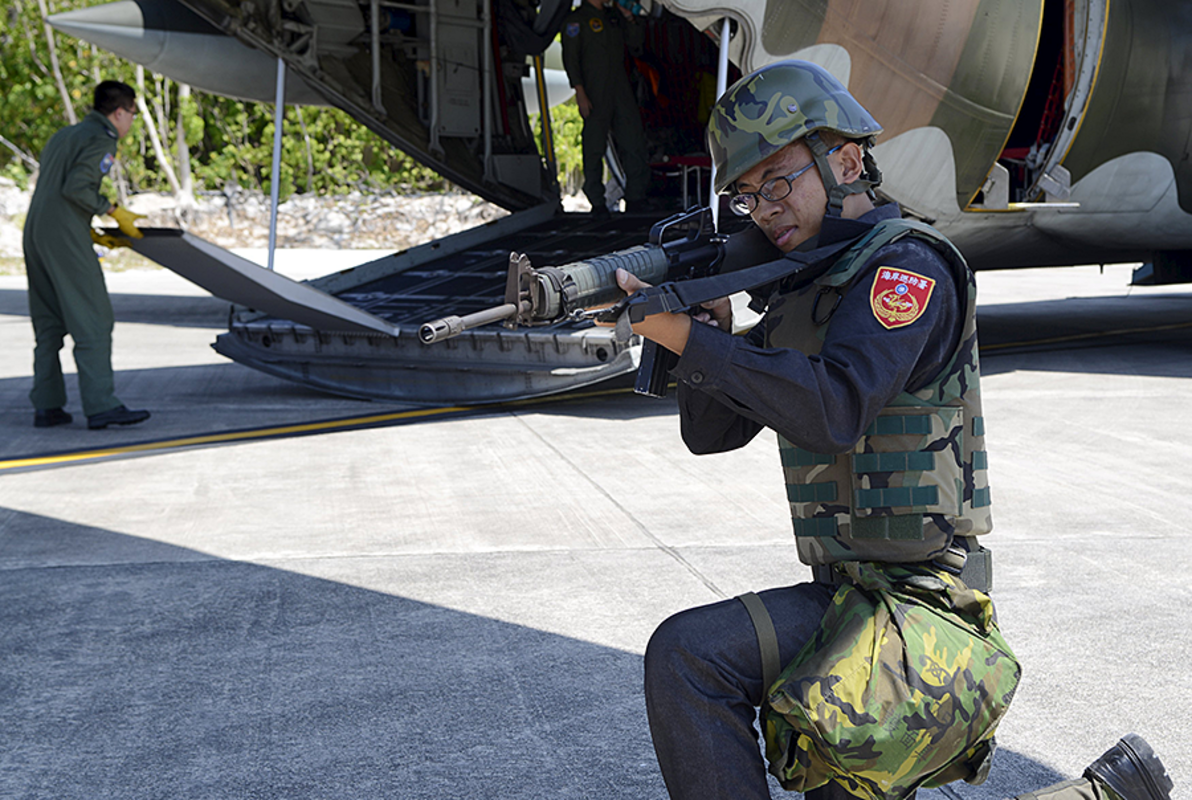China's hold on South China Sea tightening
Loading...
The saga of the South China Sea twists and turns, with a flurry of developments this week peppering the region that China seeks to dominate.
Taiwan invited international journalists to an island in a bid to prove it was habitable, and the Philippines agreed to open up five military bases to station US troops – the first to set up house on the archipelago in almost 25 years.
And in what may be the oddest twist, China had a maritime confrontation with Indonesia, one of the few countries in the area with whom it previously had no territorial disputes.
“What we’re seeing here is the emergence of the underlying trends we’re going to see this year,” says Gregory Poling, director of the Asia Maritime Transparency Initiative at the Center for Strategic and International Studies, in a telephone interview with ���Ǵ���.
The big events of 2016, says Mr. Poling, will be the ruling of an international tribunal, the Permanent Court of Arbitration in The Hague, on the Philippines’ territorial dispute with China (which China intends to ignore) and completion of China’s “dual use civilian-military” structures on the Spratly Islands.
It is hard to know how China will react to the former, but the latter will significantly increase its ability to project power in the South China Sea.
All this comes hot on the heels of Chinese installation of sophisticated radar in the Spratly Islands, surface-to-air missiles in the Paracels, and possible land reclamation at Scarborough Shoal, which it seized from the Philippines in 2012.
Together, they would lay the foundation of a “strategic triangle”, allowing China to begin meaningful domination of the area, perhaps to declare an Air Defense Identification Zone (ADIZ) in the South China Sea, just as it has in the East China Sea.
The certainly is shifting towards China, as Mira Rapp-Hooper of the Center for New American Security writes in Foreign Affairs, but the political climate is moving ever more in favor of the United States.
While Beijing “has been building islands faster than the United States can build coalitions," the United States has been focused more on diplomacy, firming its ties with ASEAN (the Association of Southeast Asian Nations) and seeking to strengthen its long-term military foundation.
“The ultimate Chinese goal in the next few years is less about pushing the US military out of the area (though that is the long-term naval strategy),” says Poling, “but rather about achieving administrative domination of the seas, so other Southeast Asian nations can do little without seeking Chinese permission.”
And, as The Economist notes, where China used to seek to “divide and rule” as it pursued its “," it has abandoned that approach, now seemingly “content to antagonize them all at the same time."
And some, the Philippines in particular, have such a severe “capability shortfall” militarily, that they can barely hope to inflict any cost whatsoever on China, let alone go “toe-to-toe” militarily, as Poling explains.
But this is the task that lies before the United States: to help the nations of Southeast Asia maintain sufficient strength to at least defend their maritime access, to have enough military might that China hesitates before crossing too many lines.
And then, if that uneasy balance can be maintained, perhaps China will become convinced that, as a great power, there is a certain way it should act, lest it undermines its own interests and tarnishes its image too severely in the eyes of the world.
“This is not a bilateral dispute between the United States and China, though in Washington it is being increasingly seen in this light,” says Poling. “It is China versus the international system… Ultimately, the solution will not be military. It will be diplomatic and legal.”





